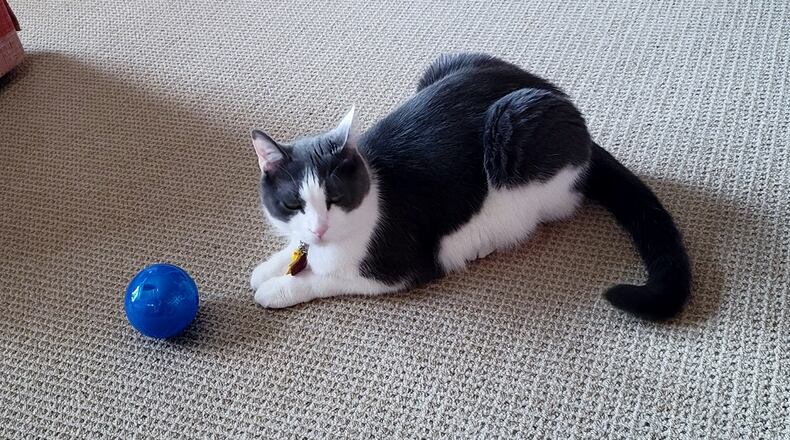On the other paw, Pip, our 4-year-old domestic short-haired cat, has not only learned how to tap and push the tumbler but he eagerly hunts for it when he’s finished eating what I’ve placed on his food mat.
There are times Pip acts more like a dog than Teddy.
Saleema Lookman, a registered veterinary technician, recently spoke on MSN.com about why cats like Pip routinely show dog behaviors. “Cats are most influenced by their parents and littermates between the ages of 3 and 6 months,” she said. “If their litter happens to be dogs instead of cats, they’ll pick up their behaviors and habits instead.”
We adopted Pip when he was 9 weeks old and Teddy, then 6 years, was his littermate.
Husband Ed and I are also reinforcing Pip’s “doglike” habits. Like other pet owners, we praise and encourage both of our pets’ good behaviors.
Finally, some cat breeds naturally share similar characteristics with dogs.
For example, Ragdolls are one of the more common breeds of cats that act like dogs. Like a child’s ragdoll, these cats go “limp” when picked up. Ragdolls enjoy and seek their owners’ physical affection, often using their laps to rest.
This breed, like humans and dogs, greets you at the door.
Pip shows daily doglike behaviors, the most common of which occurs when we call his name. Yell “Pip” or “Pip, Pip,” and the feline comes running. And no need to call him when we come home. Pip’s already waiting at our backdoor.
Pip follows me around the house like a second shadow. If not following or lying next to me, he’ll pop into whatever room I’m in to see what I’m doing – definitely a Teddy behavior.
The cat loves taking walks on a leash just like his older furry brother. The only difference is the location. Teddy and Ed walk around our Bellbrook neighborhood or near Lake Michigan when we’re on vacation. Pip walks with their dad around our backyard.
The behavior we absolutely know Pip learned from Teddy is how to play “tag.” There is no set time or rounds we play. A round stops when we’ve “tagged” or caught the runner.
Because both need to play with the leash off, we only play tag indoors. Thus, we’re moving quickly but not running.
Either pet starts the game, standing in front of one of us, head turned back to make sure we’re ready. They take off with us chasing after them laughing and yelling, “I’m going to catch you.”
If I fall behind because of navigating my wheelchair around furniture, both Teddy and Pip will stop and let me catch up before taking off again.
We’re not sure who learned from whom that waiting for me was the right thing to do, but it’s another behavior the pets share.
MORE DETAILS
Breeds of cats that act like dogs:
1. Abyssinian
2. Ragdoll
3. Manx
4. Turkish Angora
5. Bombay
SOURCE: www.prudentpet.com/cat-breeds-like-dogs/
Karin Spicer is a member of The Dog Writers Association of America. She lives in Greene County with her family and two furry pets who inspire her. She can be reached at spicerkarin@gmail.com.
About the Author
